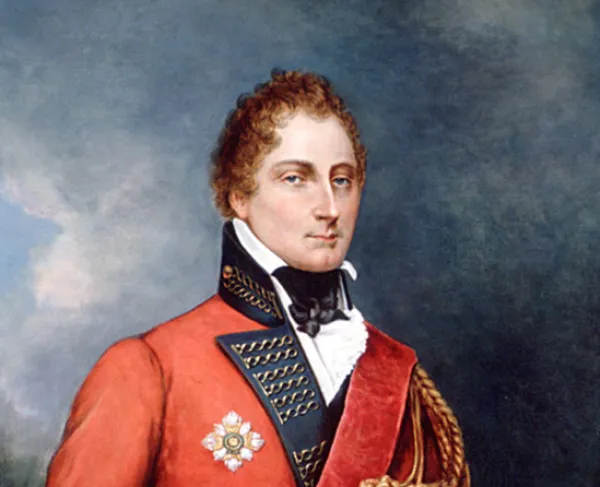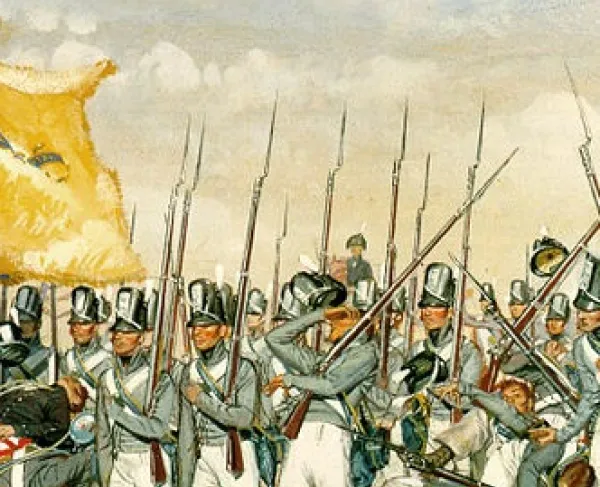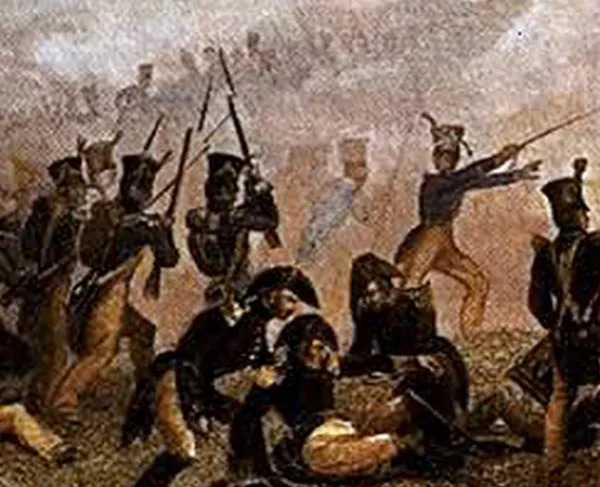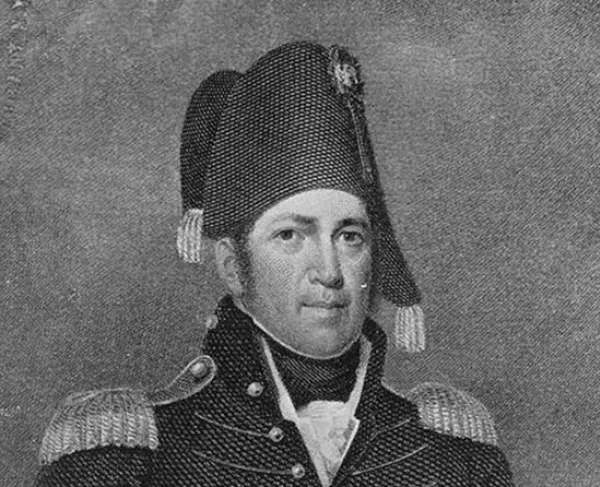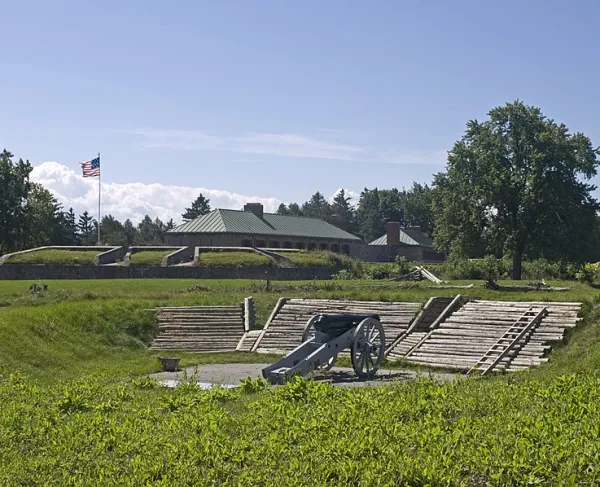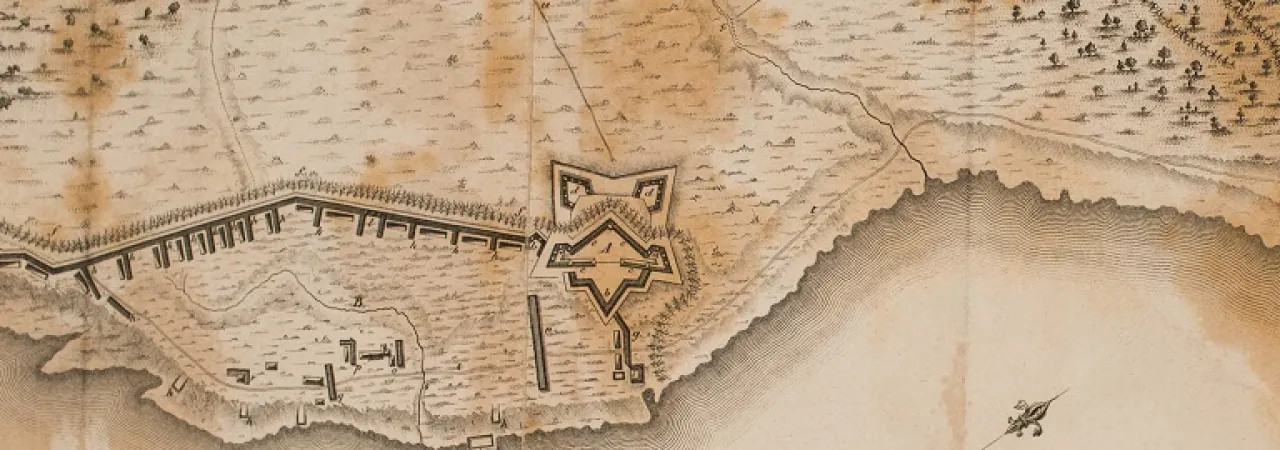
Siege of Fort Erie
Fort Erie (present-day Ontario) | Aug 4 - Sep 21, 1814
During the invasion of Upper Canada amidst the War of 1812, the United States found mixed results from their armies. However, the American Army was able to fight to a stalemate against British and Canadian forces at Lundy’s Lane, which proved to be the bloodiest battle in the entire war. Immediately following the stalemate at Lundy’s Lane, the American forces fell back to Fort Erie to reorganize and to make their next move. After the heavy losses at Lundy’s Lane, many commanders advocated for abandoning Fort Erie and retreating across the Niagara River into the US. Under the command of Brigadier General Edmund P. Gaines and Major General Jacob Brown, the American forces elected to stand their ground and build additional fortifications in Fort Erie. The British and Canadian forces, under the impression that the Americans were indeed retreating into the US, advanced towards Fort Erie slowly, giving the American defenders more time to prepare.
With the extra time given to the American defenders, the fort was expanded to accommodate the size of the American garrison. This was a result of the previous owners of Fort Erie being British and Canadian. Furthermore, the defenses were expanded to allow for an effective defense of the fort’s surrounding area before the attackers had the ability to breach the fort’s walls to attack the barracks or ammunition stores. The notable defenses constructed in preparation for the siege served to clear fields and utilize fallen trees as obstacles for advancing infantry, and the construction of an additional redoubt named “Battery Towson” for the commander in charge of the eight cannons placed there. Closer to the fort’s walls was a dry ditch that was later expanded to surround the entire fortress and soon had sharpened wooden spikes placed inside the deep ditch to prevent the ditch from being used to the attacker’s benefit. These ditches also were utilized as sewage systems and garbage dumps which served to increase the lethality of these spikes by increasing the possibility of infection from being wounded by these spikes. Soon, Fort Erie was ready to meet the British attack.
The British commander, Gordon Drummond, believed that the small American garrison in Fort Erie could be forced out by attacking neighboring American forts that supplied Fort Erie. As a result, Drummond dispatched a small force to raid Buffalo and Black Rock for their supplies. However, the raiding party was repulsed by the American defenders of these locations and the weather which decreased the efficiency of the raiders. By the time the raiders had returned to their army, Fort Erie was reinforced by three coastal gunboats. This left Drummond with no other choice but to siege the fort.
Upon giving the order to besiege Fort Erie, the British artillery established an outside perimeter of the fort’s defenses. Despite being harassed by the American gunboats in the Niagara River, the artillery was positioned. However, the cannons did not have the range to strike Fort Erie and almost all the shots landed too short of the actual fortifications. The only exception was one well-placed cannonball that created an explosion in an American powder magazine that invigorated the British and Canadian morale while not actually causing any damage to the American defenses. Drummond additionally sent out small boats of British Royal Marines to silence the American gunboats in preparation for the siege. Two of the three gunboats were captured which, yet again, increased morale among the British and Canadian forces without damaging the American defensive posture. Drummond, who believed everything was going according to plan, set out an assault for the night of August 15th.
British General Drummond planned out a three-pronged assault on the American-held Fort Erie. However, British deserters captured by the American garrison inside the fort had disclosed all the information about the planned assaults. As a result, the American garrison knew about when and where the oncoming attacks were to be. The largest column of British and Canadian forces was led by Lieutenant Colonel Victor Fischer and was first to attack the fresh redoubts of Fort Erie at “Snake Hill” which was guarded by Towson’s Battery. The heavy rain soaked American and British soldiers alike, but the American knowledge of the attack was enough for the defensive batteries to take proper precautions to protect their dry powder. The British forces under Fischer’s command, however, had to remove the flints from their muskets and relied only on their bayonets to take Snake Hill. Despite the loud rain covering Fischer’s advance, the British soldiers encountered an American picket 300 meters from the battery. The fighting between the British and the American picket alerted the battery’s defenders which immediately opened fire on the British attackers. The immediate defenses on Snake Hill gave the defensive battery the new name of “Towson’s Lighthouse” for its incredibly high rate of fire which repulsed numerous British attempts to storm the redoubt. British Colonel Hercules Scott was in command of the second assault column which was to attack as soon as the fighting for Snake Hill began. Scott’s assault was spotted as soon as the entire fort was alerted to fighting, resulting in no surprise for the American defenders. The onslaught of lead from the American defenders was halted only after someone cried out “You are shooting your own men!” in a British accent. The ruse was discovered after a minute pause in the fighting after an American officer responded “To Hell with you” which resumed the fighting. Once again, the British assault was repulsed from the fort.
The final British assault led by Drummond’s nephew, Lieutenant Colonel William Drummond made progress under the cover of darkness and the preexisting smoke that covered the battlefield. This final assault ambushed a battery at the northeast of the fort, which caught the American defenders by surprise. However, the initial shock quickly wore off and by the time William Drummond had led his men into the battery, a group of American infantrymen were already organized to meet the British assault. Despite the small breakthrough in the assault, the American defenders were able to keep the British attackers at bay, resulting in the death of William Drummond. But, during the fighting and as more British soldiers exploited the breakthrough, a powder magazine exploded underneath the captured battery. The explosion immediately killed upwards of 100 British soldiers while only wounding a handful of Americans.
After realizing that the assault on Fort Erie was doomed, General Drummond reorganized his forces into a defensive stance where the assaults first began. The makeshift camp set up by the British was riddled with disease and hunger. The conditions inside the British camp outside Fort Erie was made worse when the American defenders of Fort Erie decided to force a total British withdrawal from the area. The American counter-attacks lasted until September 21st when Drummond finally withdrew his entire force from the area, leaving it in American control.
Siege of Fort Erie: Featured Resources
Related Battles
2,800
4,800
1,075
1,553
